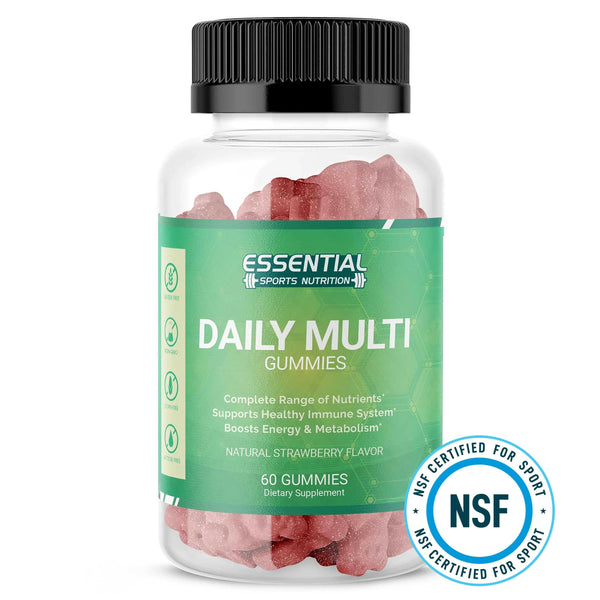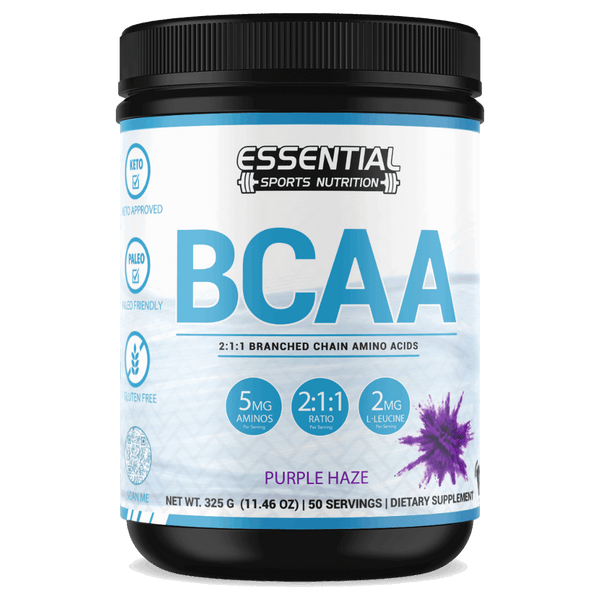Supercharge Your Back: Build, Strengthen, and Sculpt a V-Shaped Back
Many guys want a strong, muscular back but aren't sure where to start. They might feel lost among all the workout plans out there. This guide is for them. Our ultimate guide provides a detailed list of 25 top exercises to build up your back muscles, like your lats and traps.
Learn different workouts tailored just for men to get a thicker, stronger back. Whether your back day is with gym machines or with simple bodyweight moves at home, your fitness goals are fully attainable.

Key Takeaways
- Pull-ups and chin-ups are great exercises for building a strong back and can be done almost anywhere with minimal equipment.
- Deadlifts and bent-over rows target multiple muscles in the upper body, making them effective for increasing back strength and size.
- Using proper form in exercises like kettlebell swings, barbell deadlifts, and single-arm dumbbell rows can prevent injury and help build muscle efficiently.
- Assisted pull-ups allow people of all fitness levels to work on their back strength, offering an easy way to progress towards unassisted pull-ups.
- Mixing different types of back exercises into your routine ensures that all parts of the back get worked out evenly for balanced muscle growth.
Benefits of Training Your Back Muscle Groups
Training your back strengthens critical parts of your body like the spine, shoulders, and core. This reduces strain on your lower back. It helps keep you from getting hurt and can make lower back pain go away.
A strong back also supports better overall health.
Working out your back builds bigger, stronger muscles like the lats, rhomboids, and traps. Exercises using dumbbells, barbells, and just your body weight are great for growing these muscles.
They fill in any gaps if you're missing muscle strength or size in certain areas of your back.
Overview of Exercises for Your Best Back Workout Yet
Back exercises are key for a strong body. They involve moves like lifting weights off the ground, bending over to pull a bar, and pulling yourself up on a bar.
Deadlift
The deadlift is a powerful exercise that works out your back, shoulders, legs, and glutes. It's great for making your bones stronger and helps prevent bone loss. This lift lets you handle more weight than most other exercises, which is key for growing your back muscles.
Doing deadlifts works both the upper and lower parts of your back at the same time, giving you a complete back workout.
Doing this exercise right is very important to avoid getting hurt and to make sure you're really targeting the muscles in the posterior chain. The deadlift puts a lot of pressure on your lower back.
So it's crucial to keep good form throughout the move to prevent any injuries related to low-back issues.
Bent-Over Row
Stand with your feet shoulder-width apart to start a bent-over row. Grip a barbell with both hands, using an overhand grasp about shoulder-width distance. Bend at your hips and slightly bend your knees, keeping your back straight.
This is your starting position. Pull the bar towards your lower chest, keeping elbows close to your body. Squeeze your shoulder blades together as you lift. Lower the bar slowly back to the starting spot.
This exercise targets multiple muscles in the upper body including lats, rhomboids, and traps, making it great for building a stronger and more muscular back. It also helps improve posture by strengthening muscles around the spine.
To avoid injury and get better results, maintain proper form throughout each repetition and keep control of the weight you are lifting.
Pull-Up
Pull-ups are a top exercise for building back strength and muscle. You grab a bar with both hands and lift your body up until your chin is above the bar. This move targets many muscles in your upper body, especially the latissimus dorsi, which helps grow a strong back.
Adding extra weight to your pull-ups makes them even more effective for muscle growth. You can use a dip belt or hold a dumbbell between your feet to add challenge. Pull-ups not only build muscle but also improve joint health and make you stronger overall.
T-Bar Row
The T-Bar Row stands out as an essential exercise for those aiming to grow their back muscles, including the lats, rhomboids, traps, and rear deltoids. It is a compound move that not only enlarges these areas but also boosts grip strength and improves posture.
By mimicking the movement pattern of the deadlift, this workout brings in more upper body engagement. The focus on the entire posterior chain makes it a comprehensive choice for achieving a muscular and sturdy back.
To perform this activity correctly, you need a barbell and a V-grip handle. Place one end of the barbell in a corner or landmine station to keep it from moving. Straddle the barbell and attach the V-grip underhand between your legs on the bar.
Bend at your hips and knees while keeping your spine straight to lift the weight using both hands on the handle. Pull towards your chest then slowly lower it back down after a short pause.
This methodical lifting engages all targeted muscle groups effectively, leading to optimal growth and strength gains over time without putting undue stress on other parts of the body like rotator cuff muscles or pelvic regions often impacted by incorrect form or overly ambitious lifting weights.
Seated Row
A seated row works well for developing your upper back and the rear part of your shoulders. This exercise also strengthens your upper arms and back, making it a top choice for an all-around muscle build.
You do this workout on a rowing device, focusing on pulling movements that engage various muscles across your back.
Performing the seated row involves several variations with different handles to mix up the routine. Using diverse grips allows you to target various groups of muscles in your back more effectively.
It's crucial to maintain proper form to avoid mistakes and get the most benefit from this exercise. This means sitting straight, not hunching over, and pulling the handle toward you in a controlled motion without jerking.
Detailed Guide to Best Back Exercises for Building Muscle
This section offers a step-by-step approach to mastering key exercises that target the back muscles effectively. You'll learn precise techniques for movements like barbell lifts and pull-ups, ensuring you build strength and muscle safely.
Kettlebell Swings
Kettlebell swings target muscles in both the upper and lower body, including the midsection. This exercise strengthens back muscles and helps prevent back pain. Performing kettlebell swings also builds a stronger core, which is vital for overall strength training.
It's an all-encompassing workout that boosts muscle strength, enhances heart health, and promotes healthy weight loss.
Adding kettlebell swings to your routine improves respiratory and cardiovascular health significantly. You hold the kettlebell with both hands and swing it between your legs while keeping your posture straight.
This movement engages the whole body in a compound exercise that requires power from the lats, shoulders, rear delts, spinal erectors, traps (trapezius), and even works on improving flexibility in the hips and strengthening the pelvis area.
Through its dynamic motion, it serves as an explosive exercise that can lead to increased muscle mass and better physical endurance over time.
Barbell Deadlift
The barbell deadlift works your traps, lats, and low back muscles. It uses heavy weights to build muscle in your legs, back, shoulders, and arms too. This exercise is a top pick for adding strength and size to your back.
Make sure you lift with the right form to hit all the right muscles.
Doing deadlifts also boosts your core stability. You start by standing, then you lift a weighted bar off the ground until you're standing straight again. It's key for getting a strong back and big muscles all over.
Keep practicing this move if you want to see real gains in muscle mass and strength.
Barbell Bent-Over Row
To do a barbell bent-over row, start by standing with your feet shoulder-width apart. Hold a barbell with both hands, using an overhand grip that's just wider than shoulder width. Bend your knees slightly and lean forward from your waist.
Keep your back straight so it's almost parallel to the floor. Now, pull the bar towards your lower chest. Pause briefly, then slowly lower the bar back down. This move hits the upper back muscles hard and can help develop strength.
Phil Heath, a top bodybuilder, praises this exercise for creating a strong, wide back. It not only works on building muscle but also aids in improving posture and easing low-back discomfort.
Regularly incorporating barbell rows into workouts can lead to significant gains in muscle size and functional strength over time. This exercise is essential for anyone looking to enhance their overall back development effectively.
Dumbbell Single-Arm Row
The dumbbell single-arm row helps build back strength and tackles muscle imbalances. You grab a free weight in one hand, lean over by bending at the waist, then pull the weight up towards your belly.
This move offers more movement freedom than many others and puts you in a safer workout posture.
Doing this exercise correctly is key to getting stronger back muscles and enhancing strength. There are many ways to do it, like the bent-over version or supporting your chest against a bench.
Mixing these variations into your routine will lead to bigger, tougher back muscles as part of an effective plan for men's fitness goals.
Inverted Row
The inverted row is a powerful exercise for building back strength and size. It uses your body weight to work major muscles in your back, shoulders, and arms. This movement requires minimal gear—just a bar or rings set at waist height.
You lie beneath the bar, grab it with both hands using an overhand grip, and pull your chest up to the bar while keeping your body straight.
This exercise not only builds muscle but also teaches good posture. By performing inverted rows, you engage different angles of your back compared to other movements like lat pulldowns or deadlifts.
Variations include using suspension trainers or gymnastic rings to add more challenge as you progress. Each version activates the lats (latissimus dorsi), teres major, posterior deltoids, and helps improve shoulder joint health by reinforcing proper alignment during the lift.
Lat Pulldowns
Lat pulldowns are a must for growing your back muscles. You pull down a bar attached to a cable machine while sitting, targeting the lats on either side of your back. This move also hits other areas like shoulders and arms, giving you more upper body power.
Varying your grip changes which muscles work harder. A wide grip focuses on the outer lats, and a closer grip shifts the effort slightly.
Using different grips helps in building muscle mass evenly across your back and enhancing muscular balance. It's not just about pulling the bar down; engaging your core helps protect your lower-back too.
Always aim for controlled movements to maximize muscle contraction without risking injury. Whether you're using free weights or machines at the gym, including lat pulldowns in your routine will significantly impact your strength training goals by improving postures such as squatting and deadlifting better due to stronger support from a muscular back.
Single-Arm T-Bar Rows
Single-Arm T-Bar Rows are a key workout for building a strong back. They require you to use a barbell and weights, making it easy to add or remove weight as needed. This exercise targets your upper body muscles intensely, helping in muscle growth and strength improvements.
To start, stand over the bar with one hand on it and the other supporting your body on a sturdy surface. Keep your feet planted firmly on the ground, slightly wider than shoulder-width apart.
Performing this exercise correctly involves pulling the weight towards your chest while keeping your back straight and core tight. Your arm should move in a controlled manner, enhancing both grip strength and upper body stability.
Benefits include building a muscular back and improving posture over time. You'll also find yourself able to lift heavier weights safely by practicing regularly, which contributes to progressive overload - an essential principle for muscle development.
Farmers’ Walk
The Farmers’ Walk strengthens your back, shoulders, and grip. You carry heavy weights like dumbbells or kettlebells in each hand and walk a certain distance. This exercise puts high muscle tension on your forearms, upper back, and shoulders.
It helps build muscles all over your body.
This workout is very functional. You can do it anywhere - in a gym or at home. It makes your heart health better and builds endurance and strength. The Farmers’ Walk works many major muscle groups in the arms and back for full-body development.
It also comes in different styles to meet various fitness goals.
Renegade Row
Renegade row combines a back workout with core strengthening. You start in a push-up position holding dumbbells. Then you pull one dumbbell up to your side while keeping your body straight, like a plank.
Alternate arms for each rep. This exercise hits not just the back but also works the core, hips, and helps with lower-back strength.
Doing renegade rows builds muscle and improves stability across the whole body. It's great for improving posture too because it targets muscles that keep you upright. Use weights that challenge you but still allow you to keep good form throughout the set.
Keeping your movements controlled will maximize the benefits of this compound exercise.
Maximizing Your Back Day Workouts
Maximizing your back workouts means pushing every exercise to fully build your muscle. This requires focus, correct form, and the right techniques to make each move count. Learn how to level up your workouts for a stronger back today.
How to increase your pull-ups
To increase your pull-ups, start by strengthening your lats, trapezius muscles, rhomboids, and shoulder blades areas. Use exercises that work these parts like lat pulldowns and inverted rows which will build the necessary muscle for more pull-ups.
Also, practicing active hangs on the pull-up bar improves grip strength and endurance. This prepares your arms and shoulders for the workload of more repetitions.
Next, focus on technique. Begin with a pronated grip to engage more back muscles during each rep. Add variations such as using a neutral grip or adding weight slowly to challenge yourself further.
Squeezing your glutes at the top can also help you perform more repetitions by stabilizing your body. Follow progressions designed for building upper back strength if starting from scratch or aiming to break past a plateau.
How to enhance your bent-over rows
Use a wide grip to make your bent-over rows stronger. This targets your upper back muscles more effectively. Keep your spine straight and bend at the hips, not the waist. This helps prevent low-back pain and increases stability.
Pull the barbell towards your hip, not your stomach. Letting your shoulders move freely increases muscle work in your lats and mid-back. Start with warm-up sets using lighter weights to boost blood flow to the muscles.
Focus on feeling the back muscles pull and squeeze with each lift for better mind-muscle connection.
How to boost your deadlifts
To boost your deadlifts, focus on proper form first. Stand with feet shoulder-width apart over a loaded barbell. Bend your knees while pushing hips back to grip the bar firmly. Keep feet flat and engage your abdominal muscles to keep hips square during the lift.
This technique targets back, shoulders, and leg muscles effectively.
Increase strength by adding exercises that improve posture and support deadlifting movements. Incorporate kettlebell swings and romanian deadlifts into your routine to build power in the posterior chain.
Practicing these moves helps strengthen legs, lower-back, and posterior muscles necessary for powerful lifts. Always aim for a full range of motion to maximize muscle engagement during every exercise session.
How to improve your cable rows
Keep your back straight and shoulders down to start improving your cable rows. This position helps target the middle part of your back effectively. Your grip should be firm but not too tight on the handle, which allows better movement control.
Pull the handle towards you, keeping it close to your body, and focus on squeezing your shoulder blades together.
Varying exercises like the wide-grip seated cable row with 3 sets of 10-12 reps can significantly enhance strength and muscle mass in your back area. Incorporate alternating high cable row into your workout for greater lat engagement throughout their entire motion range.
For those aiming at increasing their back's strength and size more intensely, adding single-arm cable row into their routine is beneficial. Including these variations will make sure you're working out all parts of your back thoroughly for a fuller development.
How to perfect your single-arm dumbbell row
To perfect your single-arm dumbbell row, start with lighter weights. This ensures you master the form before increasing the load. Place one knee and hand on a bench for support, keeping your back flat.
Hold a dumbbell in your free hand with your arm extended toward the floor. Lift the dumbbell by bending your elbow, pulling it up and back towards your hip. Lead with your elbow to focus the work on your back muscles.
Inhale as you lift and exhale on release.
Eric Roberts offers detailed guidance on this exercise to guarantee it's done correctly. He suggests inhaling as you pull the weight upwards, leading with elbows to target the right muscles effectively.
For an extra challenge, pause briefly at the top of each row. This pause intensifies muscle engagement, adding value to every rep of your workout routine without needing heavier weights right away.
Stick to these practices for significant improvements over time in both form and strength during single-arm dumbbell rows.
Best Bodyweight Exercises for a Bigger Back
Unlock the power of your own body to build a stronger back with the best exercises you can do anywhere, like pull-ups and supermans. Keep reading to learn how these simple moves can transform your fitness routine.
Pull-ups
Pull-ups stand as a top exercise for growing a larger back. They target multiple muscle groups, making them an ideal pick for anyone looking to boost upper body strength. This bodyweight movement works the back, shoulders, and arms thoroughly.
To perform one, you simply need a pullup bar. Grip the bar with your hands shoulder-width apart and lift your body until your chin is above the bar. Then lower yourself down slowly.
Including pull-ups in your routine balances pushing exercises nicely. Since they don't require equipment beyond a chin-up bar, you can do them almost anywhere – at home or at the gym.
They not only enhance muscle size but also contribute significantly to upper body power, improving how you look and feel overall.
Chin-ups
Chin-ups stand out as one of the top bodyweight back exercises for men looking to grow a bigger back. This exercise requires you to lift your entire body weight by pulling yourself up until your chin is over the bar.
It's a tough but rewarding workout that targets several key muscles, including those in your upper back and biceps.
To do chin-ups right, grasp the bar with an underhand grip about shoulder-width apart. Hang from the bar with straight arms, pull yourself up so that your chin goes over the bar, then lower back down slowly and repeat.
For those finding standard chin-ups challenging, try variations like chin-up holds or close-grip chin-ups to gradually build strength and improve form. These alternatives help keep the workout effective while minimizing risk of injury.
Assisted Pull-ups
Assisted pull-ups are a key exercise for anyone looking to build a bigger back. They use bands or machines for help, making it easier to perform the move. This is perfect for people at all fitness levels.
Bands reduce some of your body weight, so you can do more reps. Machines work similarly but can be adjusted for just the right amount of help.
Using assisted pull-ups helps boost your upper body power. It's good for both men and women wanting stronger backs and arms. Start with assistance that lets you do 8-10 pull-ups without getting too tired.
As you get stronger, use less help to keep challenging your muscles. This way, you keep getting better and building muscle in your back and arms.
Superman
The Superman exercise strengthens your back and improves posture. You lie on the floor, extend your arms in front of you, and lift both your arms and legs off the ground. This move targets all skill levels, offering a solid workout for the lower back and helping to reduce injury risks.
To do the Superman, start by lying face down with limbs extended. Raise your hands and feet a few inches off the ground, hold for a few seconds, then lower back down. Repeat this movement for several sets to effectively engage your back muscles.
Adding variations or weights can increase intensity over time, making it a versatile part of any routine focused on building a stronger core and better posture.
Active Hangs
Active hangs strengthen your grip and build muscle in your forearms, biceps, triceps, and shoulders. You start by grabbing onto a pull-up bar with both hands. Make sure your grip is strong.
Then, hang with your arms straight and feet off the ground. Keep this position as long as you can to work those muscles.
Doing active hangs also prepares you for more complex exercises like pull-ups. They improve your ability to lift yourself up from an overhead bar by boosting forearm strength and endurance.
For folks aiming to increase their pull-up numbers, incorporating active hangs into workouts is key. This exercise not only enhances grip but also benefits upper body strength significantly.
Building a V-Shaped and Stronger Back
Getting a V-shaped back requires focus on specific muscle groups. You should work on your lats and shoulders to make them wider and your waist narrower. This shape gives the look of a bigger upper body and a slim waist.
Pull-ups and lat pull-downs are great exercises for widening the upper part of your body. Deadlifts strengthen your lower back, adding to the V-like appearance.
To enhance this look, include compound movements in your workout plan like rows and pull-ups. These exercises target multiple muscles at once, making them more effective for building that desired V-shape.
Also, paying attention to your diet helps reduce waist size, which makes the upper body stand out even more. For men who don't have access to a gym, there are v-taper workouts you can do at home with minimal equipment or none at all.
Conclusion

This guide has shown the popular go-to exercises for a stronger back, from kettlebell swings to pull-ups. Each exercise is chosen to help you build muscle in key areas like your lats and traps.
We've made sure these workouts fit into any routine, whether at home or in the gym. They focus on growing muscle and strength effectively, laying down the base for a bigger upper body.
Remember, a well-rounded back supports everything from daily tasks to advanced lifting techniques. Using equipment like barbells and dumbbells makes these workouts versatile and impactful.
Taking steps such as improving your pull-up technique or mastering deadlifts can significantly enhance your strength.
Embrace this journey with confidence knowing that every lift brings you closer to your goal of a bigger, sculpted back. Let's reshape what strength means to you!
Back Training FAQs
Q: What are the best exercises for strengthening my back?
A: Pull-ups, chin-ups, and conventional deadlifts rank among the top exercises for building a strong back. These compound exercises work multiple muscles at once, making them highly effective.
Q: Can pushups and press-ups improve my back strength?
A: Yes, pushups and press-ups target your upper body, including your back. They help strengthen the shoulders and lower-back muscles when performed correctly.
Q: How do isolation exercises benefit my back workout?
A: Isolation exercises like the incline bench press focus on specific muscles—such as the pecs or external rotators—allowing you to target areas that may need more attention compared to compound movements.
Q: Should I use free weights or machines for my back workouts?
A: Free-weight exercises with a standard barbell or EZ curl bar encourage natural movement patterns and engage stabilizing muscles, offering a more comprehensive workout than most machines can provide.
Q: How can I prevent lower-back pain during workouts?
A: Maintain proper form during all exercises, especially during squats and deadlifts where there's a risk of rounding your lower back. Strengthening core muscles also helps support your lower back during workouts.
Q: What are the best back exercises for men?
A: Some of the best back exercises for men include pull-ups, deadlifts, rows, lat pulldowns, and hyperextensions.
Q: How often should I train my back muscles?
A: It is recommended to train your back muscles at least once or twice a week to allow for proper recovery and muscle growth.
Q: Can back workouts help alleviate lower back pain?
A: Yes, strengthening the muscles in your back through targeted back workouts can help alleviate lower back pain and improve overall back health.
Q: What are the benefits of incorporating back exercises into my workout routine?
A: Benefits of training your back include improved posture, increased muscle strength, better stability, and reduced risk of back injuries.
Q: Is it important to maintain a full range of motion during back exercises?
A: Yes, maintaining a full range of motion during back exercises helps stimulate all muscles in your back and promotes muscle growth and strength.
Q: How can I build muscle and strength in my back effectively?
A: To build muscle and strength in your back, focus on incorporating a variety of back exercises, progressively overloading your muscles, and ensuring proper form.
Q: What is a good back workout program for men?
A: A good back workout program for men may include a mix of exercises targeting different areas of the back such as the upper back, lower back, and middle back, combined with sufficient rest and recovery time.























